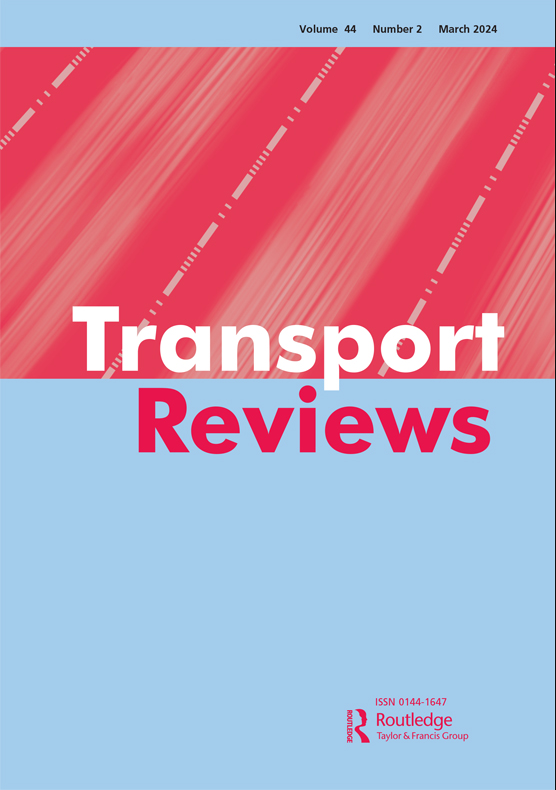Effectiveness of interventions for modal shift to walking and bike riding: a systematic review with meta-analysis
IF 9.9
1区 工程技术
Q1 TRANSPORTATION
引用次数: 0
Abstract
Background
Identification of priority interventions to support modal shift to walking and bike riding is challenged by the myriad of interventions available, and a lack of synthesised evidence for what types of interventions are most effective. With increasing investments in active travel, there is substantial demand for synthesised evidence of efficacy between intervention types. This systematic review aimed to measure the effectiveness of interventions to increase active travel with a primary outcome of modal shift.
Methods
The electronic databases MEDLINE, PsycINFO and Web of Science were searched. Eligible study designs included randomised and non-randomised studies of interventions with specific study design features that enabled the estimation of causality with minimal risk of bias. Studies were categorised by intervention types described within the Behaviour Change Wheel.
Results
106 studies that assessed the impact of an intervention on walking, cycling or active transport overall were included. Findings demonstrate that physical environmental restructure interventions, such as protected bike lanes and traffic calming infrastructure, were most effective in increasing cycling duration (OR = 1.70, 95% CI 1.20–2.22). Other intervention types, including individually tailored behavioural programmes, and provision of e-bikes, were also effective (OR = 1.33, 95% CI 1.23–1.43, OR = 1.13, 95% CI 1.02–1.22). An intensive education programme intervention demonstrated the greatest impact on walking (OR = 1.96, 95% CI 1.68–2.21). This body of research would benefit from more rigors in study design to limit lower quality evidence with the potential for bias.
Conclusion
This review provides evidence for investment in high-quality active transport infrastructure, such as protected bike lanes, to improve cycling and active transport participation overall. It also provides evidence for investment in other non-infrastructure interventions. Active transport research needs to move towards trials with consistent outcome measures to inform which combinations of interventions (including disincentives) are most effective.
Study registration
PROSPERO CRD42023445982
干预方式转变为步行和骑自行车的有效性:系统回顾与荟萃分析
背景:现有的干预措施数不胜数,而且缺乏综合证据证明哪种干预措施最有效,因此确定支持向步行和骑自行车模式转变的优先干预措施面临挑战。随着对主动旅行的投资不断增加,对各种干预措施的有效性综合证据的需求很大。本系统综述旨在衡量以模式转变为主要结果的干预措施的有效性。方法检索MEDLINE、PsycINFO和Web of Science电子数据库。符合条件的研究设计包括具有特定研究设计特征的干预措施的随机和非随机研究,这些研究设计特征能够以最小的偏倚风险估计因果关系。研究按行为改变轮内描述的干预类型进行分类。结果106项研究评估了干预对步行、骑自行车或主动交通的总体影响。研究结果表明,物理环境重构干预措施,如保护自行车道和交通平静化基础设施,在增加骑行时间方面最有效(OR = 1.70, 95% CI 1.20-2.22)。其他干预类型,包括个人定制的行为计划和提供电动自行车,也有效(OR = 1.33, 95% CI 1.23-1.43, OR = 1.13, 95% CI 1.02-1.22)。强化教育方案干预对步行的影响最大(OR = 1.96, 95% CI 1.68-2.21)。这部分研究将受益于更严格的研究设计,以限制可能存在偏倚的低质量证据。结论本综述为投资高质量的主动交通基础设施,如保护自行车道,以提高自行车和主动交通的整体参与提供了证据。它还为其他非基础设施干预措施的投资提供了证据。主动交通研究需要朝着具有一致结果衡量标准的试验方向发展,以告知哪些干预措施(包括抑制措施)组合最有效。研究注册号prospero CRD42023445982
本文章由计算机程序翻译,如有差异,请以英文原文为准。
求助全文
约1分钟内获得全文
求助全文
来源期刊

Transport Reviews
TRANSPORTATION-
CiteScore
17.70
自引率
1.00%
发文量
32
期刊介绍:
Transport Reviews is an international journal that comprehensively covers all aspects of transportation. It offers authoritative and current research-based reviews on transportation-related topics, catering to a knowledgeable audience while also being accessible to a wide readership.
Encouraging submissions from diverse disciplinary perspectives such as economics and engineering, as well as various subject areas like social issues and the environment, Transport Reviews welcomes contributions employing different methodological approaches, including modeling, qualitative methods, or mixed-methods. The reviews typically introduce new methodologies, analyses, innovative viewpoints, and original data, although they are not limited to research-based content.
 求助内容:
求助内容: 应助结果提醒方式:
应助结果提醒方式:


